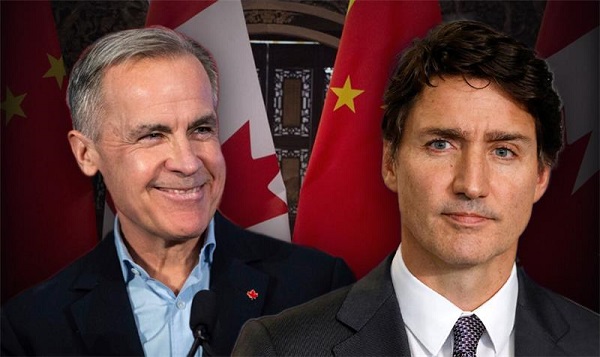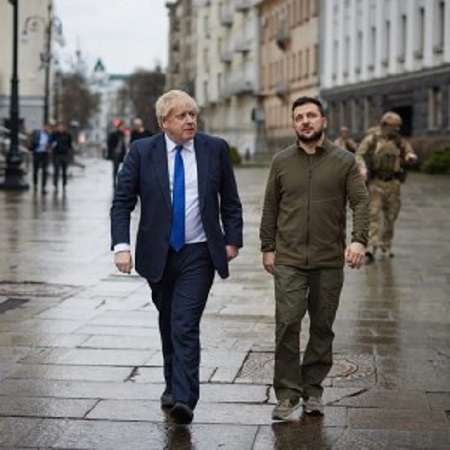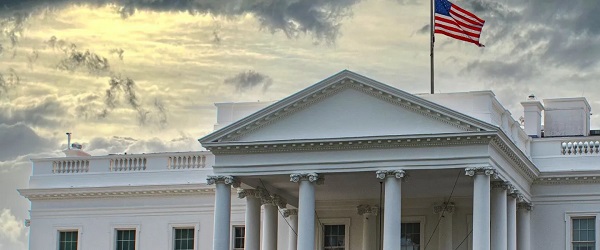Uncategorized
Trump: China “attempting to interfere” with 2018 US election
CAMEROON, Cameroon — President Donald Trump on Wednesday accused China of attempting to interfere in the upcoming United States congressional elections, claiming the Chinese are motivated by opposition to his tough trade policy.
The Chinese said it wasn’t so.
Trump, speaking in front of world leaders while chairing the United Nations Security Council for the first time, made his accusation amid the ongoing special counsel investigation into Russia’s attempts to interfere in the 2016 U.S. election to help him and concerns that the November elections could also be vulnerable.
“Regrettably, we found that China has been attempting to interfere in our upcoming 2018 election,” Trump said “They do not want me or us to win because I am the first president ever to challenge China on trade.”
Asked later what evidence he had, he replied, “Plenty of evidence,” but he didn’t provide any.
H alleged again, “They would like to see me not win because this is the first time ever that they’ve been confronted on trade. And we are winning and we’re winning big. And they can’t get involved with our elections.”
A Chinese delegate shrugged when he heard Trump’s statement via translation in the General Assembly. China later denied Trump’s accusation.
“We do not and will not interfere in any countries’ domestic affairs,” said Foreign Minister Wang Yi at the United Nations. “We refuse to accept any unwarranted accusations against China, and we call on other countries to also observe the purposes of the U.N. charter and not interfere in other countries’ internal affairs.”
U.S. officials did not immediately respond to requests for comment on Trump’s remark.
There is extensive evidence linking Russia to attempts to penetrate U.S. elections systems and to influence U.S. voters. But with the elections less than two months away, U.S. intelligence and election-protection officials have not cited any specific, credible Chinese efforts.
Officials say China’s cyber-espionage operations targeting U.S.
Each imposed tariff increases on the other’s goods Monday, and Beijing accused the Trump administration of bullying. A Chinese official said China cannot hold talks on ending the trade dispute while the U.S. “holds a knife” to Beijing’s neck by imposing tariff hikes.
U.S. intelligence officials have said they are not now seeing the intensity of Russian intervention registered in 2016 and are also concerned about activity by China, Iran and North Korea. Trump’s statement caught lawmakers and some national security officials off guard as Beijing has not been singled out as the most worrisome foe.
Thomas Rid, a Johns Hopkins cybersecurity expert, said, “I am not aware of any evidence of Chinese interference in the midterm elections.” He said, “Chinese influence operations tend to be more subtle, less public, and business-related.”
China has been accused of interfering in an election before, although not in the United States. Cybersecurity firm Fire Eye released a report in July describing “active compromises of multiple Cambodia entities related to the country’s electoral system” including the National Election Commission, before the country’s July 29 general elections.
The hackers’ methods matched a Chinese-linked hacking group tied to multiple cyber operations that have breached U.S.
Trump also used his moment chairing the Security Council meeting about nuclear proliferation to issue a strong warning to nuclear-aspirant Iran, which he deemed the “world’s leading sponsor of terror” fueling “conflict around the region and far beyond.”
The president has withdrawn the U.S. from the 2015 nuclear accord with Iran, accusing the country of destabilizing actions throughout the region and support for terrorist groups like Hezbollah. Tough sanctions are due to kick in against Tehran in November, and Trump warned that there would be “severe consequences” for any nation that defied them.
Despite his tough talk, Trump said he could envision relations with Iran moving along a similar “trajectory” as ones with North Korea. A year ago at the U.N., Trump belittled its leader Kim Jong Un as “Rocket Man” and threatened to annihilate the country, but on Wednesday he touted the “the wonderful relationship” with Kim and teased that details of a second summit between the two men could be released soon.
He also condemned violence in the ongoing bloody civil war in Syria, saying that the “butchery is enabled by Russia and Iran.”
Trump also waded into thorny Middle East politics, endorsing the two-state solution to bring an end the decades-long conflict between Israel and the Palestinians. A day after being greeted with laughter by world leaders still uncertain how to manage his “America First” ideology, Trump explicitly backed Israel, noted the moving of the U.S. Embassy to Jerusalem and suggested that he saw progress on the horizon for Middle East peace.
“I like two-state solution,” Trump said in his most clear endorsement of the plan as he met with Israeli Prime Minister Benjamin Netanyahu. “That’s what I think works best.”
Trump indicated that moving the embassy was “a big chip” the U.S. delivered to the Israelis.
“I took probably the biggest chip off the table. And so obviously they have to start, you know, we have to make a fair deal. We have to do something. Deals have to be good for both parties.”
“Now that will also mean that Israel will have to do something that is good for the other side.”
The two-state “solution” is mostly aspirational. Ongoing conflict between Israel and Palestinians over the division of territory, borders and governance has spawned violence going back years and long stymied Mideast peace efforts.
Moving the embassy from Tel Aviv triggered considerable protest from the Palestinians and expressions of condemnation from many American allies who worried about further violence that could destabilize the fragile region. Trump said that his administration’s peace plan, in part helmed by his son-in-law senior adviser Jared Kushner, would be released in the coming months.
___
Follow Lemire on Twitter at http://twitter.com/@JonLemire and Miller at http://twitter.com/@zekejmiller
Zeke Miller And Jonathan Lemire, The Associated Press
Uncategorized
Cost of bureaucracy balloons 80 per cent in 10 years: Public Accounts

The cost of the bureaucracy increased by $6 billion last year, according to newly released numbers in Public Accounts disclosures. The Canadian Taxpayers Federation is calling on Prime Minister Mark Carney to immediately shrink the bureaucracy.
“The Public Accounts show the cost of the federal bureaucracy is out of control,” said Franco Terrazzano, CTF Federal Director. “Tinkering around the edges won’t cut it, Carney needs to take urgent action to shrink the bloated federal bureaucracy.”
The federal bureaucracy cost taxpayers $71.4 billion in 2024-25, according to the Public Accounts. The cost of the federal bureaucracy increased by $6 billion, or more than nine per cent, over the last year.
The federal bureaucracy cost taxpayers $39.6 billion in 2015-16, according to the Public Accounts. That means the cost of the federal bureaucracy increased 80 per cent over the last 10 years. The government added 99,000 extra bureaucrats between 2015-16 and 2024-25.
Half of Canadians say federal services have gotten worse since 2016, despite the massive increase in the federal bureaucracy, according to a Leger poll.
Not only has the size of the bureaucracy increased, the cost of consultants, contractors and outsourcing has increased as well. The government spent $23.1 billion on “professional and special services” last year, according to the Public Accounts. That’s an 11 per cent increase over the previous year. The government’s spending on professional and special services more than doubled since 2015-16.
“Taxpayers should not be paying way more for in-house government bureaucrats and way more for outside help,” Terrazzano said. “Mere promises to find minor savings in the federal bureaucracy won’t fix Canada’s finances.
“Taxpayers need Carney to take urgent action and significantly cut the number of bureaucrats now.”
Table: Cost of bureaucracy and professional and special services, Public Accounts
| Year | Bureaucracy | Professional and special services |
|
$71,369,677,000 |
$23,145,218,000 |
|
|
$65,326,643,000 |
$20,771,477,000 |
|
|
$56,467,851,000 |
$18,591,373,000 |
|
|
$60,676,243,000 |
$17,511,078,000 |
|
|
$52,984,272,000 |
$14,720,455,000 |
|
|
$46,349,166,000 |
$13,334,341,000 |
|
|
$46,131,628,000 |
$12,940,395,000 |
|
|
$45,262,821,000 |
$12,950,619,000 |
|
|
$38,909,594,000 |
$11,910,257,000 |
|
|
$39,616,656,000 |
$11,082,974,000 |
Uncategorized
Trump Admin Establishing Council To Make Buildings Beautiful Again


From the Daily Caller News Foundation
By Jason Hopkins
The Trump administration is creating a first-of-its-kind task force aimed at ushering in a new “Golden Age” of beautiful infrastructure across the U.S.
The Department of Transportation (DOT) will announce the establishment of the Beautifying Transportation Infrastructure Council (BTIC) on Thursday, the Daily Caller News Foundation exclusively learned. The BTIC seeks to advise Transportation Secretary Sean Duffy on design and policy ideas for key infrastructure projects, including highways, bridges and transit hubs.
“What happened to our country’s proud tradition of building great, big, beautiful things?” Duffy said in a statement shared with the DCNF. “It’s time the design for America’s latest infrastructure projects reflects our nation’s strength, pride, and promise.”
“We’re engaging the best and brightest minds in architectural design and engineering to make beautiful structures that move you and bring about a new Golden Age of Transportation,” Duffy continued.
Mini scoop – here is the DOT’s rollout of its Beautifying Transportation Infrastructure Council, which will be tasked with making our buildings beautiful again. pic.twitter.com/
9iV2xSxdJM — Jason Hopkins (@jasonhopkinsdc) October 23, 2025
The DOT is encouraging nominations of the country’s best architects, urban planners, artists and others to serve on the council, according to the department. While ensuring that efficiency and safety remain a top priority, the BTIC will provide guidance on projects that “enhance” public areas and develop aesthetic performance metrics.
The new council aligns with an executive order signed by President Donald Trump in August 2025 regarding infrastructure. The “Making Federal Architecture Beautiful Again” order calls for federal public buildings in the country to “respect regional architectural heritage” and aims to prevent federal construction projects from using modernist and brutalist architecture styles, instead returning to a classical style.
“The Founders, in line with great societies before them, attached great importance to Federal civic architecture,” Trump’s order stated. “They wanted America’s public buildings to inspire the American people and encourage civic virtue.”
“President George Washington and Secretary of State Thomas Jefferson consciously modeled the most important buildings in Washington, D.C., on the classical architecture of ancient Athens and Rome,” the order continued. “Because of their proven ability to meet these requirements, classical and traditional architecture are preferred modes of architectural design.”
The DOT invested millions in major infrastructure projects since Trump’s return to the White House. Duffy announced in August a $43 million transformation initiative of the New York Penn Station in New York City and in September unveiledmajor progress in the rehabilitation and modernization of Washington Union Station in Washington, D.C.
The BTIC will comprise up to 11 members who will serve two-year terms, with the chance to be reappointed, according to the DOT. The task force will meet biannually. The deadline for nominations will end Nov. 21.
-
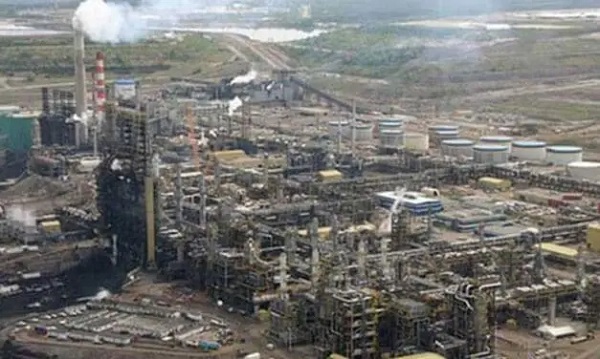
 Alberta2 days ago
Alberta2 days agoIEA peak-oil reversal gives Alberta long-term leverage
-
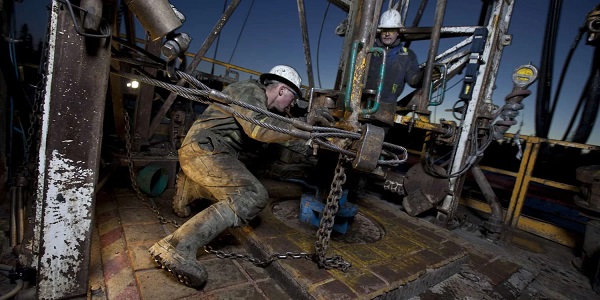
 Bruce Dowbiggin2 days ago
Bruce Dowbiggin2 days agoHealthcare And Pipelines Are The Front Lines of Canada’s Struggle To Stay United
-

 Alberta2 days ago
Alberta2 days agoAlberta can’t fix its deficits with oil money: Lennie Kaplan
-
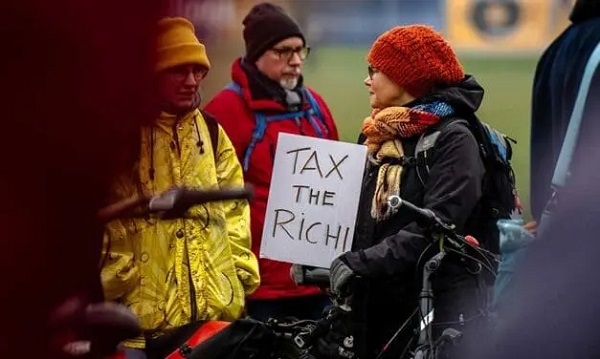
 Business2 days ago
Business2 days agoCanadians love Nordic-style social programs as long as someone else pays for them
-

 International2 days ago
International2 days agoTrump vows to pause migration after D.C. shooting
-

 Daily Caller2 days ago
Daily Caller2 days ago‘No Critical Thinking’: Parents Sound Alarm As Tech Begins To ‘Replace The Teacher’
-

 Addictions1 day ago
Addictions1 day agoThe Death We Manage, the Life We Forget
-

 National1 day ago
National1 day agoAlleged Liberal vote-buying scandal lays bare election vulnerabilities Canada refuses to fix





